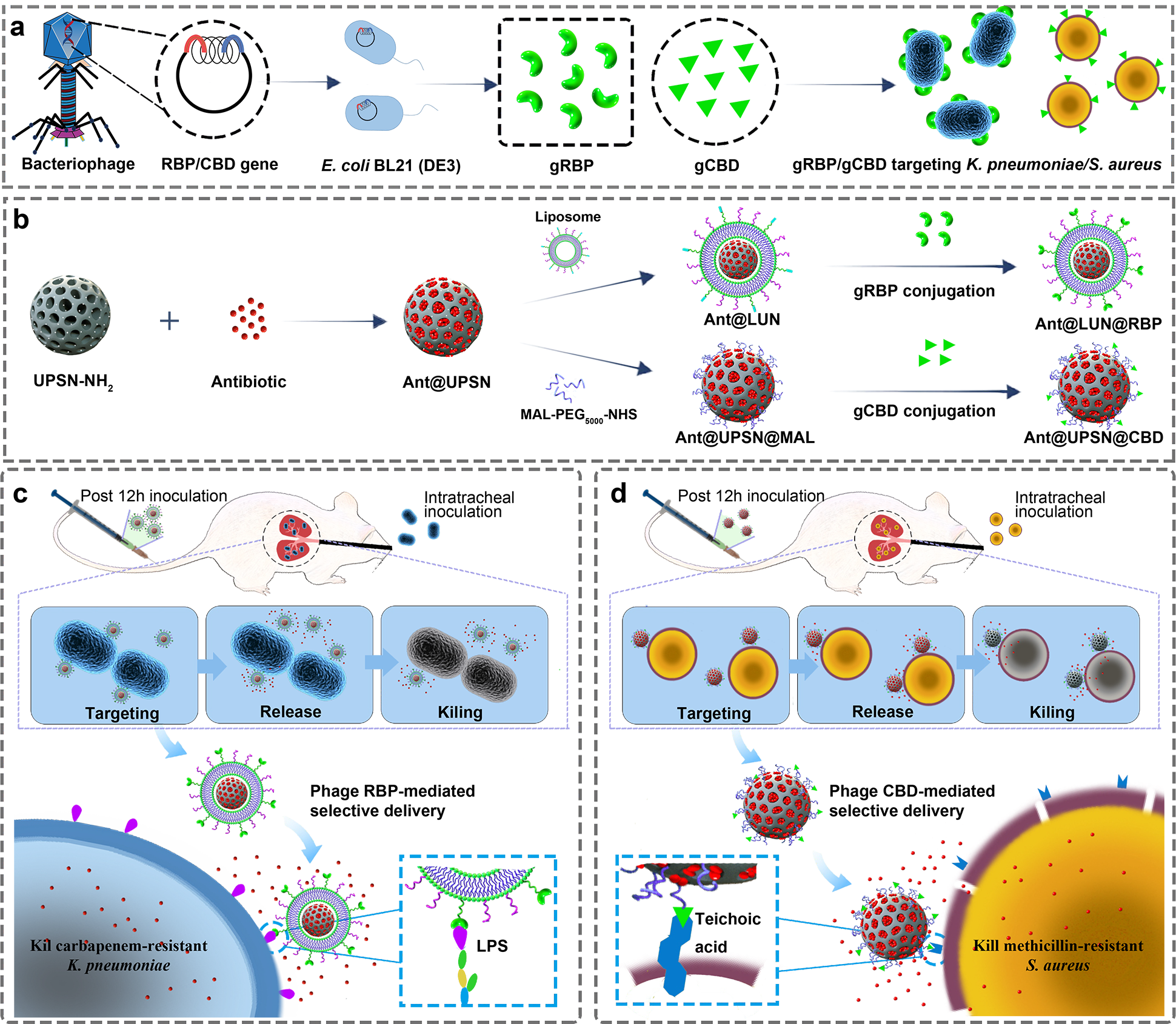
Research News
Research News
Guiding antibiotics towards their target using bacteriophage proteins
The effectiveness of conventional antibiotics has been declining in the past decades due to the emergence of resistant bacteria. Most alarming is the accelerated appearance of antibiotic resistance in the bacteria known as ESKAPE pathogens (Enterococcus faecium,Staphylococcus aureus,Klebsiella pneumoniae,Acinetobacter baumannii,Pseudomonas aeruginosa, andEnterobacterspecies). These bacterial strains carry antibiotic resistance genes and are highly virulent, causing life threatening infections.
Unfortunately, the number of newly approved first-in-class antibiotics has been steadily decreasing in the past two decades, especially those for the treatment of infections caused by Gram-negative pathogens. This decrease can be partially explained by the financial risk of developing novel antibiotics.
To circumvent this problem, researchers are looking for strategies that enhance existing antibiotics, rather than developing completely new therapies. One such strategy is the use of targeted nanodelivery systems. Nanodelivery systems enhance the efficacy of antibiotics by guiding them to their targets, increasing the local concentration at the site of infection. While recently described nanodelivery systems are promising, they are generally not easy to adapt to different targets, and lack biocompatibility or specificity.
On June 20th,2024, Nature Communications published a novel strategy for combating antibiotic-resistant pathogens using bacterial-targeted nanomedicines, in which bacteriophage proteins were employed as the targeting modules. This research was led by Dr. Xinghong Zhao and Dr. Hongping Wan, a team that focuses on Sustainable Antimicrobials research.
In Dr. Zhao and Dr. Wan’s study, nanodelivery systems are created that source their targeting proteins from bacteriophages. Bacteriophage receptor-binding proteins and cell-wall binding domains are conjugated to nanoparticles, for the targeted delivery of rifampicin, imipenem, and ampicillin against bacterial pathogens. They show excellent specificity against their targets, and accumulate at the site of infection to deliver their antibiotic payload. Moreover, the nanodelivery systems suppress pathogen infections more effectively than 16 to 32-fold higher doses of free antibiotics. This study demonstrates that bacteriophage sourced targeting proteins are promising candidates to guide nanodelivery systems. Their specificity, availability, and biocompatibility make them great options to guide the antibiotic nanodelivery systems that are desperately needed to combat difficult-to-treat infections.

This work was supported by the National Key Research and Development Program, the “1000-Talent Program” in Sichuan Province, the Science and Technology Project of Sichuan Province, and the National Natural Science Foundation of China.
For more information, please visit:https://doi.org/10.1038/s41467-024-49603-4






 028-86296382
028-86296382  No. 211 Huimin Road, Wenjiang District, Chengdu, Sichuan Province
No. 211 Huimin Road, Wenjiang District, Chengdu, Sichuan Province 